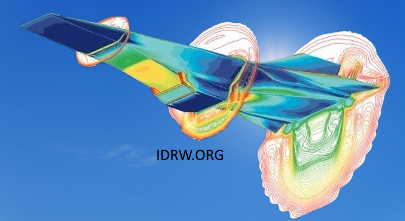SOURCE: AFI


The Indian Space Research Organisation (ISRO) has reached significant milestones in the development of its Hypersonic Air-breathing Vehicle with Airframe-integrated Scramjet (HAVA). This ambitious project aims to enhance India’s capabilities in hypersonic flight technology, a critical area of research with profound implications for both civilian and defense applications. Recent advancements in the HAVA project highlight ISRO’s continued progress toward realizing this cutting-edge technology.
One of the critical achievements in the HAVA project is the successful completion of its aerodynamic characterization. This phase involved detailed analysis and testing to understand the vehicle’s behavior in hypersonic conditions, ensuring that the design meets the rigorous demands of high-speed flight. The results provide valuable data that will guide the further development and refinement of the HAVA vehicle, ensuring stability and efficiency during operation.
In addition to aerodynamic characterization, ISRO has also completed the development of several essential subsystems. These include:
GH2-GO2-Based Ignition System: The ignition system, which utilizes a combination of gaseous hydrogen (GH2) and gaseous oxygen (GO2), has also been successfully developed. This system is responsible for initiating the combustion process within the scramjet engine, a crucial function for sustaining hypersonic flight.
Fluid Storage and Feed System: This system is crucial for managing the flow of fuels and oxidizers needed during the vehicle’s operation. Its successful development ensures that the HAVA vehicle can reliably manage the complex requirements of hypersonic propulsion.
Air Intake Cowl Opening Mechanism: This mechanism controls the opening of the air intake cowl, a critical component in the scramjet engine, which allows air to enter the engine at supersonic speeds. The completion of this system marks a significant step forward in ensuring the vehicle’s overall aerodynamic performance.
The development of materials and coupon-level testing for the Thermal Protection System (TPS) has also seen progress. These materials are essential for protecting critical components, such as air intake ramps and scramjet combustors, from the extreme temperatures encountered during hypersonic flight. The completion of this testing ensures that the materials can withstand the harsh conditions of hypersonic operation, safeguarding the vehicle’s structural integrity.
ISRO has also made significant strides in the testing of its scramjet combustor. The connected pipe mode scramjet combustor testing demonstrated the performance of both the air heater and the igniter in achieving supersonic combustion of Isrosene, a fuel developed by ISRO. These tests are critical for validating the combustor’s ability to sustain the high-speed combustion necessary for hypersonic flight.
Following these successful tests, the scramjet combustor has been refurbished in preparation for the next round of hot testing. This upcoming test, scheduled to take place at the National Aerospace Laboratories (NAL), will further evaluate the combustor’s performance under realistic conditions, moving the HAVA project closer to its final objectives.